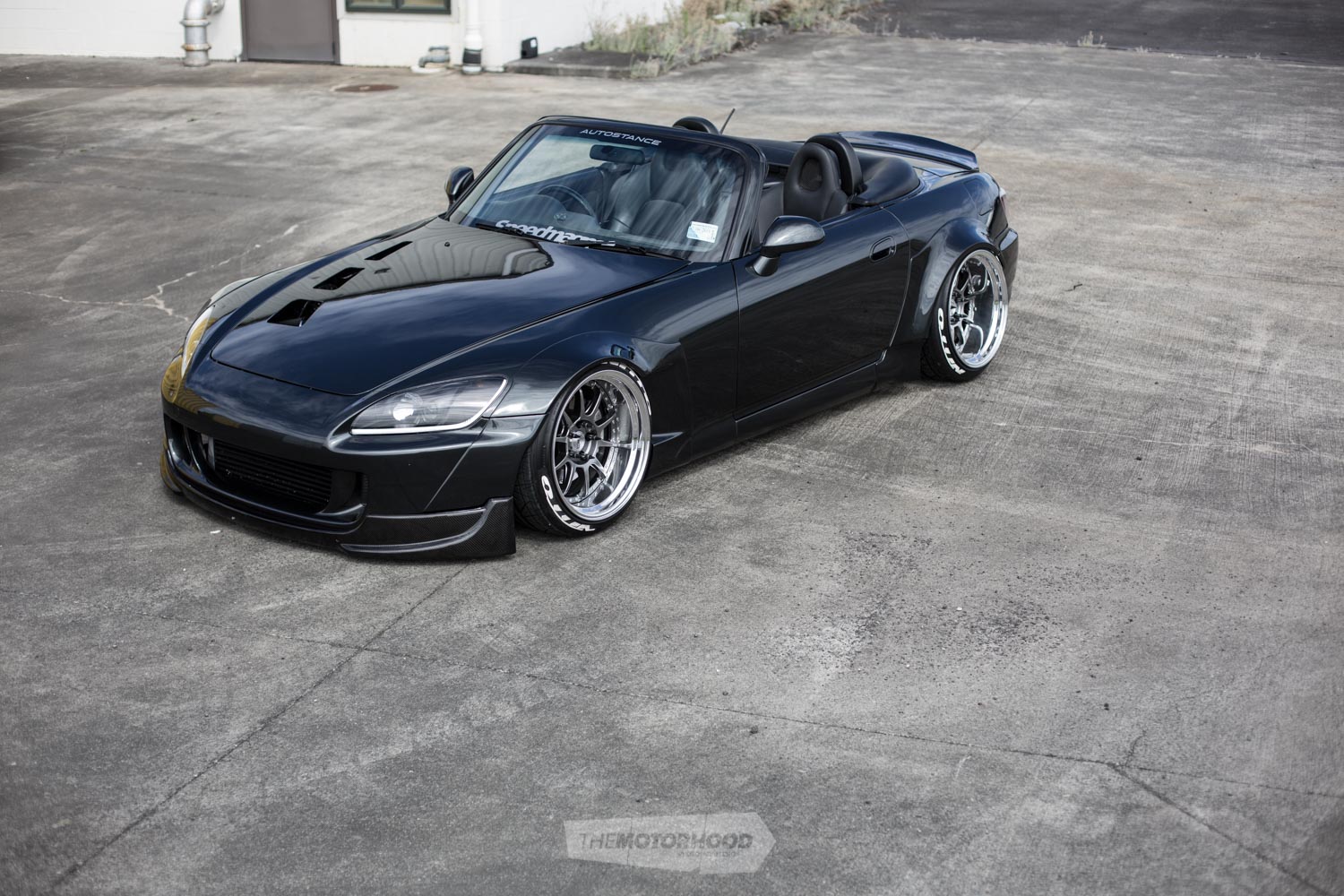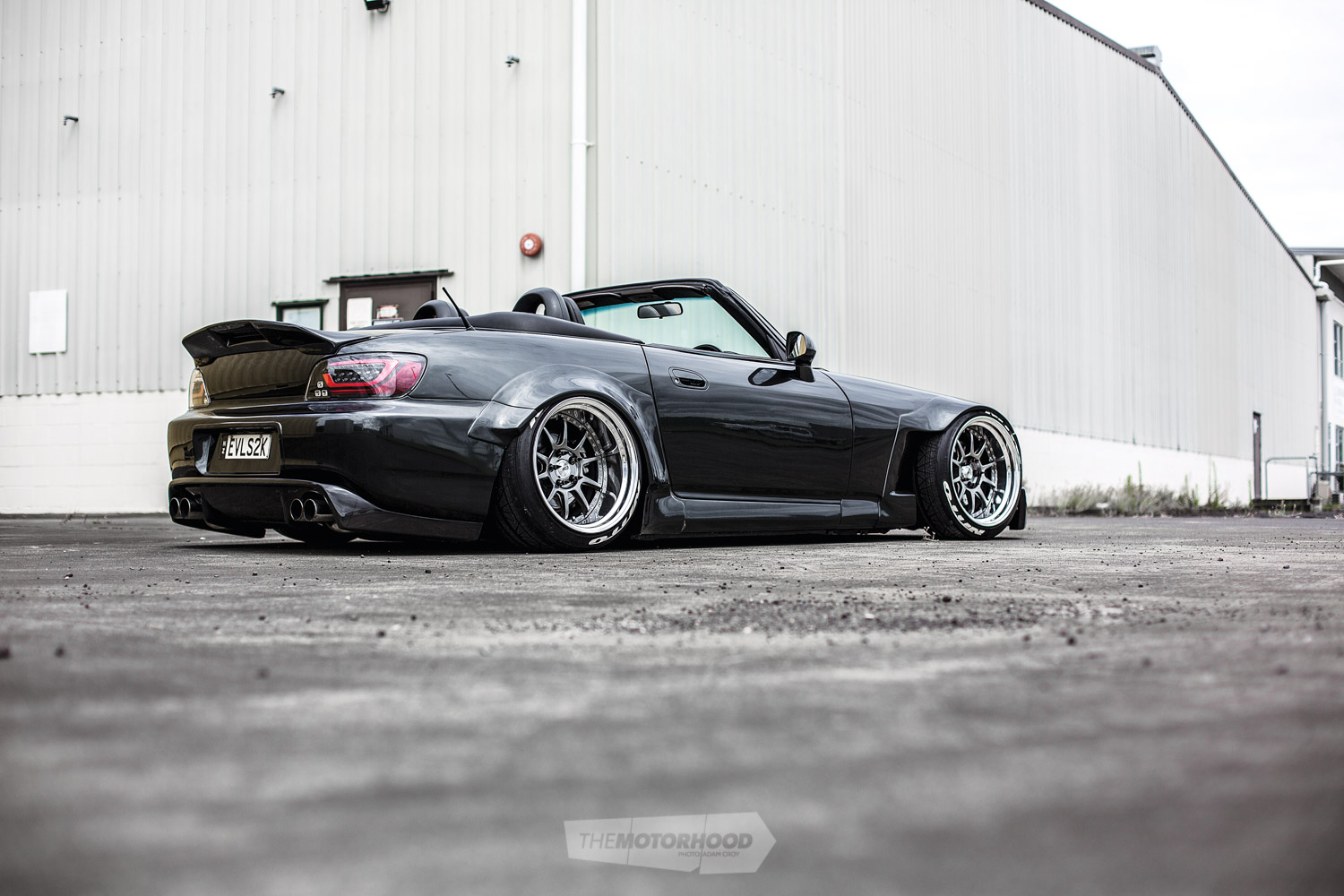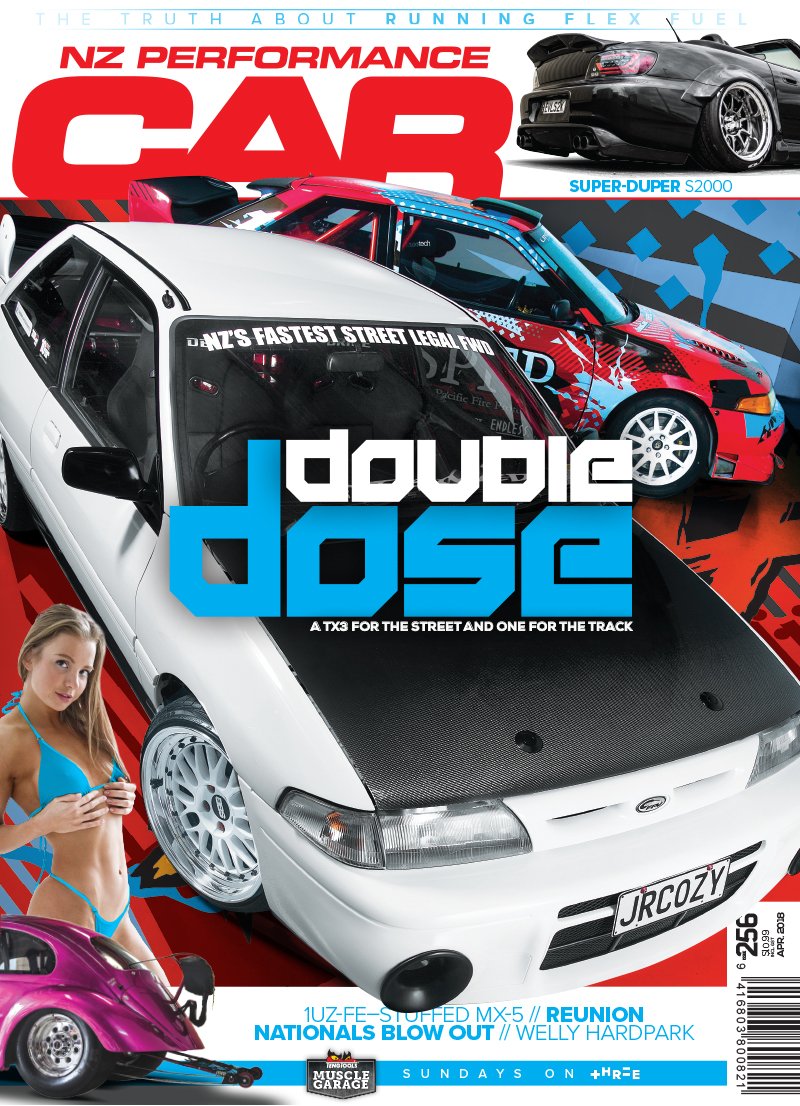Honda really missed the chance to produce the best special edition of all time, so Matthew Holt has gone and built it for them

Whenever you meet someone new, there’s always that awkward period of small talk that ensues, when you both attempt to figure out what each other is all about in the shortest amount of time possible. So, when one car person meets another, almost instantly the same question arises: “What do you drive?” In turn, responding with “A Honda” ccan evoke different thoughts depending on the person asking the question, but what they’re best known for is being rapidly fast and endlessly revving front-wheel drives, and, of course, pioneers of that variable valve timing all-time favourite — VTEC. But what most tend to forget is even a member of the Honda family is a perfectly over-engineered, rear-wheel-drive, front-engined oddity that seemed to come out of left field back in 1999.
We’re of course referring to the S2000. It’s perhaps one of the most underrated platforms Honda has to offer, and it seems that the masses have only just clocked on to how well they perform out of the box. However, the owner of the example you see before you, Matthew Holt, was one of those early adopters who recognized the benefits inherent in a long and wide-wheelbase car with a low centre of gravity and an engine that, for a long time, held the record for producing the highest specific power output of any mass-produced naturally aspirated piston engine.

How does a power band of boost from 3500rpm right out to 8800rpm with a twin-hit of VTEC at 5500rpm sound? Yeah, pretty damn good
It’s been a labour of love for Matt over the past four years, as he explains: “This is literally my own rendition of how I want this car to be.” But how he wanted the car to be has continued to change throughout the period he’s been pedalling it, which is why, to date, the car has worn more colours than you have fingers, with aesthetic elements coming and going — and we won’t even attempt to list how many sets of badass wheels this thing has sat on in the past. And then there is the F20C, which is well worth its weight in naturally aspirated form, but Matt has taken things a step futher and is now on to his fourth boosted set-up!
Today, the S2K makes use of subtle aero pieces and a super-low ride height that come together to form a sleek highway racer that would look at home within the Mid Night Club. The widebody itself started life as a Circuit Garage unit that was handed over to GT Refinishers to work its magic. This saw the bolt-on styling removed and the overall thickness shaved down to create a cohesive shape that worked in with the car’s factory body lines. The result is a serious amount of width that smoothly blends into the car’s profile, accenting the existing lines and swallowing the massive 18×10-inch (-1) and 18×11.5-inch (-8) SSR SP3s wrapped in Nitto Invo rubber, which beefs things up — especially in the arse end; Kim K who?

Custom bumper caps flow that width down into the AP2 (facelift) front and rear bumpers, with a gaggle of carbon-fibre pieces in the mix. Colour choice has never been Matt’s strong suit, so, when it came time for the paintwork, he was unsure in which direction to head, telling us, “I wanted something I would still enjoy 10 years from now and not want to tear up, so my initial thought was a charcoal grey. I told Grant at GT [Refinishers], and he looked at me and said, ‘Why do all this work only to paint it something so boring?’.” The result was a custom Mk6 Golf carbon steel grey with green tones that pops under sunlight — laid down by Ben at GT.
That colour extends into the engine bay, too, which is where you’ll find the real party-starter: the unopened boosted F20C, with its previously mentioned eighth boost set-up, a Garrett GT3582R snail sitting atop a custom front-mount Sinco manifold. A set of Injector Dynamics 1000cc injectors provides fresh 98, while spark is boosted by a D1 Spec ignition boost system, and an AEM Series 2 ECU takes care of the management side of the equation. Besides the chrome-plated intake manifold and custom stainless turbo-back exhaust by BNR Engineering, there isn’t much else to it — which makes how fast this thing moves out even more impressive. Spinning up the dyno at 326kW and cranking 280Nm on 10psi in a chassis this nimble is something else, but the secret weapon is really how big the power band is.

Whereas some cars only start to spool at 4000rpm onwards and topple off at around the 7000rpm mark, this bad boy comes on boost by 3500rpm, with a twin-hit of VTEC at 5500rpm, and revs right out to 8800rpm, with no topple! Trust us, it makes for hitting those lose-your-licence speeds in the blink of a goddamn eye.
And while the factory driveline is hailed for being particularly reliable, with that kind of power being sent, and wanting to put it to the ground properly, Matt has rebuilt the six-speed box with a PAR Engineering straight-cut dog-engagement gear set and opted to switch out the factory limited-slip differential (LSD) for an R33 GT-R V-spec example. There’re kits available out of the states, as Matt explains, but, with the unknowns surrounding US- and Jap-spec cars and no straight answer from manufacturers, it wasn’t worth the investment to get one here only to discover it wouldn’t work. So, instead, BNR Engineering was called on to fabricate custom diff mounts and undertake a bit of axle wizardry to make billet shafts splined to suit OEM S2000 hubs on the outer and R33 CVs on the inner.

Matt’s S2000 rolls on BC Gold coilovers that have been retrofitted with airbags. The best part about running air is the infinitely adjustable spring rates and the freedom to lay frame when parked up
“I have had experiences with [the] majority of other makes and models, and have a huge appreciation for the mechanical engineering ability of Honda, but never have I found one single car that ticked as many boxes as this,” says Matt. “Most of all, it has the most natural handling of any other car I have driven before.”
That handling comes in part due to the S2000’s unique X-bone chassis design, which brings the front two rails to the centre as one solid beam that runs down the tunnel before opening back out at the rear, all the while braced by an additional two sill rails. It was a design decision perhaps to counter the fact that there’s no roof to provide torsional strength; regardless of the reason, it works, and Matt made sure to retain that feeling when achieving that slammed ride height. While, for many years, it was riding static, the S2000 floats on air these days, courtesy of BC Gold coilovers that have been fitted with airbags, which are controlled by Air Lift Performance 3P management.
So now, regardless of what preconceived notions the person on the asking end of that question we mentioned at the start may have, when Matt answers that he drives a Honda S2000 and points outside to where it’s parked, you know that they’re going to be impressed. The combination does nothing aesthetically to distract away from what it is, embracing the low, long, and wide ethos, with the execution reminiscent of factory fitment, topped off with the power and response expected from a true highway runner. This is exactly how to S2000.

Matthew Holt
AGE: 24
LOCATION: Auckland
OCCUPATION: Director of Autostance
BUILD TIME: Four years; current form: six months
LENGTH OF OWNERSHIP: Four years
THANKS: Autostance, GT Refinishers, BNR Engineering, Jtune Automotive, Prosport Auto, Sinco, R-Parts, Daniel Tok, and Scott Stancliffe

Heart
ENGINE: Honda F20C, 1997cc, straight-four
BLOCK: Factory
HEAD: Factory
INTAKE: Chrome-plated intake manifold with thermal gasket, Fenix intercooler
EXHAUST: Custom stainless system by BNR Engineering, heat-coated downpipe, Varex wireless remote-controlled mufflers
TURBO: Garrett GT3582R, Sinco manifold
WASTEGATE: Turbosmart 45mm
BOV: Turbosmart
FUEL: AEM fuel pump, Injector Dynamics ID1000 fuel injectors
IGNITION: HKS Racing spark plugs, D1 Spec ignition boost system
ECU: AEM Series 2
COOLING: Fenix alloy radiator
EXTRA: Turbosmart boost solenoid, powder-coated rocker cover, carbon-fibre cooling panels, custom-made alloy covers
Driveline
GEARBOX: PAR Engineering six-speed straight-cut gear set fitted to factory housing
CLUTCH: ATS twin-plate
FLYWHEEL: ATS super-lightweight
DIFF: R33 GT-R V-spec, custom billet alloy mounts
OTHER: Custom billet axles
Support
STRUTS: BC Gold with airbag conversion
BRAKES: Factory calipers, Endless curved E-slit heat-treated racing rotors, Endless racing pads, Endless stainless lines and fluids
EXTRA: Air Lift Performance 3P management; Hardrace and Megan Racing rear camber, rear toe, and front camber arms; bump-steer correction kit
Shoes
WHEELS: (F) 18×10-inch (-1) SSR SP3, (R) 18×11.5-inch (-8) SSR SP3
TYRES: (F) 225/40R18 Nitto Invo, (R) 255/35R18 Nitto Invo
Exterior
PAINT: Resprayed in carbon steel grey by GT Refinishers
ENHANCEMENTS: Modified Circuit Garage widebody guards, custom front bumper caps, AP2 front bumper, AP2 rear bumper, JDP Engineering carbon-fibre boot spoiler, JDP Engineering carbon-fibre boot lid, JDP Engineering carbon-fibre rear diffuser, carbon-fibre front lip, custom AP1 headlights, deleted park and indicator lights, Depo LED tail lights
Performance
POWER: 326kW
TORQUE: 280Nm
BOOST: 10psi
FUEL: 98 octane
TUNER: Jtune Automotive
This article originally appeared in NZ Performance Car issue No. 256 — you can grab a copy of the mag by clicking the cover below










